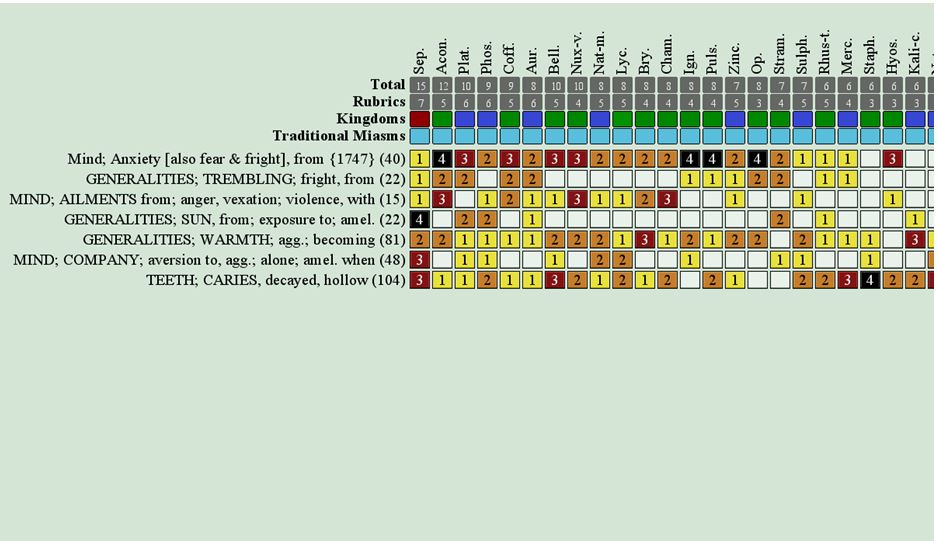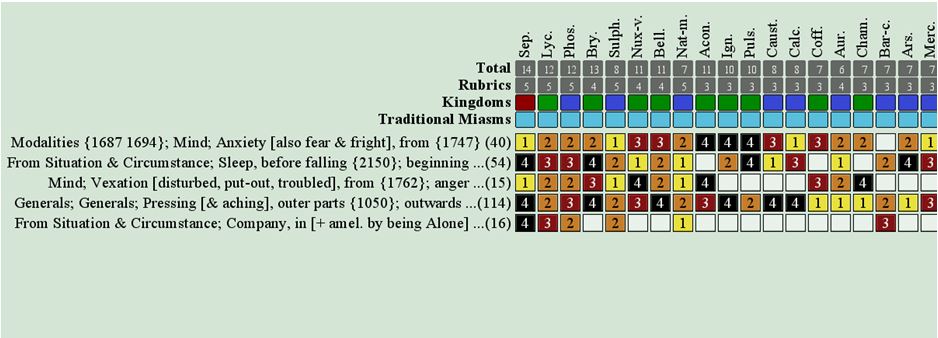Similar Thought
Joseph Kellerstein, DC, ND
Frederik has a pale complexion, red lips, and large eyes. He is 7 years old. Looking at me suspiciously, he does not respond to my greeting but cautiously comes into my consultation room and silently sits, waiting for Mom to initiate things. And she does.
Pretty soon he is oriented and knows that the subject is what has been bothering him. I look over the intake form again. Sadness, fear, and anger. And eczema. I suggest that we begin talking about what is most important right now.
The Case
A few months ago Frederik had a scary dream about zombies. For a few days after that he was in a panic, especially at night as he was going off to sleep. He would actually tremble on falling asleep. This lasted 4 or 5 consecutive evenings, and what has remained is a fear as it becomes dark every night. Someone (Mom) must be close at night, comforting him until sleep supervenes.
I ask Frederik what needs to be talked about next.
Frederik says, very articulately, “If the teachers say that work will be hard, I get stressed.”
Say more about stressed, I suggest.
He replies, “It feels like a balloon growing inside me that will pop.”
Whereabouts?
“All over, but especially my head – a headache.”
Is there anything else about that headache when it feels like a balloon?
“No.”
Is there anything more about stress?
“Yes. I am easily stressed when the classroom is noisy.”
What else about stress?
Mom intervenes and tells me that our patient is liable to get frustrated, especially with his brother, and that he can become violently angry when this happens.
Patient History
Frederik’s eczema began at 8 months when solid foods were introduced. The parents learned over time that Frederik had a marked sensitivity to foods, especially egg white; however, he has no issue conforming to a healthy diet. This is unusual for a such a young child to have no cravings, making this discipline so easy.
The eczema began in the crease of the neck, then went to the crease of the arm, and then the knee. It got very bad behind the ears, and finally everywhere.
At its worst the skin got so bad there was a supervening Strep infection that required a visit to the hospital and antibiotics. Mom says this reminds her of the time around his delivery, which was 7 weeks early. The delivery was fast and she has a lingering impression that Frederik was taken away from her ”fast”; he received antibiotics before mother’s milk.
As an infant he was curiously averse to being held after this. To this day he seems to instinctively want to play alone at recess and lunch.
Mom then doubles back to continue discussing the eczema…
“If we put him in the sun, no matter how bad the skin, within 3 days it’s dramatically improved. It is usually worse in the winter. Oddly enough, despite the improvement from exposure to the sun, it is worse if he is in a warm room or wearing clothing that’s too warm.”
When asked to comment on Frederik’s nature, she answered spontaneously: “He is very artistic – he has always loved to draw, and can sit and draw for hours!”
Then came a remembrance: “Frederik has had a lot of cavities.”
That was it.
Repertorization
Here are the symptoms I chose to repertorize, using The Complete Repertory, edited by Van Zandvoort (see Figure 1):
Modalities {1687 1694}; Mind; Anxiety [also fear & fright], from {1747} (40)
GENERALITIES; TREMBLING; fright, from (22)
MIND; AILMENTS from; anger, vexation; violence, with (15)
GENERALITIES; SUN, from; exposure to; amel. (22)
GENERALITIES; WARMTH; agg.; becoming (81)
MIND; COMPANY; aversion to, agg.; alone; amel. when (48)
TEETH; CARIES, decayed, hollow (104)
GENERALITIES; WARMTH; agg.; becoming (81)
MIND; COMPANY; aversion to, agg.; alone; amel. when (48)
TEETH; CARIES, decayed, hollow (104)

I then further repertorized, using Bönninghausen Repertory, or TBR2 (see Figure 2).

I had a remedy in mind, but for confirmation I ask about the effect of perspiration on the eruption. Yes, it does aggravate.
The Remedy
I found it interesting that the natural tendency of an infant rapidly taken from his mother at birth was to have an aversion to affection, and later an instinctive desire to play alone.
There was also the contradictory modalities of much better in the sunlight yet worse becoming warm in a room or by excess clothing.
Finally, the strong artistic tendency, added to the above, seemed to confirm Sepia.
My Rationale
In the materia medica, for the Fright, dream and aggression (Allen):
Fright dreams; she cries out in her sleep
A dream full of strife
Anxious dreams, which drive him from his bed (aft. 19 d.)
He wakes up at night with fright and a shriek
Screaming at night in one’s sleep
For Trembling on falling asleep (Allen):
On falling asleep, there was an internal trembling, with itching on the thigh, which went off after scratching.
For Anger (Hahn):
Inclined to anger
Angry, peevish
Very morose and violent
A trifle may produce a violent ebullition of anger, with trembling (especially of the hands).
Artistic aptitude has been emphasized by Andre Saine as an addition to the Repertory.
The choice feels right. Let’s see what happens in a month.
Plan: Sepia 30C: 1 pellet 3 times weekly. The interspersed dose was used so as to be able to stop the remedy should an aggravation of the skin occur.
Three Weeks Later
Three weeks later the family happened to stop in at my office prior to leaving on a holiday. They told me that Frederik’s skin initially cleared very quickly after starting the remedy – within 3 days. However, on continued use of the remedy, the fright had returned, albeit to a lesser degree.
I asked them to discontinue the remedy and to book a follow-up appointment. My reasoning was that Hahnemann tells us that when one is dosing on a regular basis, a return of symptoms that had initially resolved may indicate that the issue is no longer the natural disease but rather a new sensitivity to the remedy in the absence of actual natural disease.
Image Copyright: <a href=’https://www.123rf.com/profile_albinaglisic’>albinaglisic / 123RF Stock Photo</a>
 Joseph Kellerstein, DC, ND, graduated as a chiropractor in 1980 and as an ND in 1984. He graduated with a specialty in homeopathy from the Canadian Academy for Homeopathy, and subsequently lectured there for 2 years. He also lectured in homeopathy for several years at CCNM; for 8 years at the Toronto School of Homeopathic Medicine; and for 2 years at the British Institute for Homeopathy. Dr Kellerstein’s mission is the exploration of natural medicine in a holistic context, especially homeopathy and facilitating the experience of healing in patients.
Joseph Kellerstein, DC, ND, graduated as a chiropractor in 1980 and as an ND in 1984. He graduated with a specialty in homeopathy from the Canadian Academy for Homeopathy, and subsequently lectured there for 2 years. He also lectured in homeopathy for several years at CCNM; for 8 years at the Toronto School of Homeopathic Medicine; and for 2 years at the British Institute for Homeopathy. Dr Kellerstein’s mission is the exploration of natural medicine in a holistic context, especially homeopathy and facilitating the experience of healing in patients.


